I have the following code which encrypts/decrypts data for me in java
I need to encrypt/decrypt data in C# on a windows phone(8) device and same data should be able to decrypt/encrypt using this java code.
what would be the equivalent code of this java code in C# in Windows Phone??
public class AESencrp {
private static final String ALGO = "AES";
private static final byte[] keyValue = new byte[] { 'S', 'D', 'P', 'i', 'b', 'm', 'B','H', 'A', 'R', 'T','I', 'P', 'K', 'e', 'y' };
public static String encrypt(String Data) throws Exception {
System.out.println(".............Encryption start............");
Key key = generateKey();
System.out.println("Key : " + key);
Cipher c = Cipher.getInstance(ALGO);
c.init(Cipher.ENCRYPT_MODE, key);
byte[] encVal = c.doFinal(Data.getBytes());
//System.out.println("encVal in byte[] : " + encVal);
String encryptedValue = new BASE64Encoder().encode(encVal);
System.out.println("encryptedValue byusing base64 : " + encryptedValue);
System.out.println("..............Encryption End............");
return encryptedValue;
}
public static String decrypt(String encryptedData) throws Exception {
//final byte[] keyValue1 = new byte[] { 'T', 'h', 'e', 'B', 'e', 's', 't','S', 'e', 'c', 'r','e', 't', 'K', 'e', 'y' };
System.out.println("");
System.out.println("");
System.out.println(".............Decryption start............");
Key key = generateKey();
//Key key = new SecretKeySpec(keyValue1, ALGO);
//System.out.println("Key : " + key);
Cipher c = Cipher.getInstance(ALGO);
c.init(Cipher.DECRYPT_MODE, key);
byte[] decordedValue = new BASE64Decoder().decodeBuffer(encryptedData);
//System.out.println("decryptedValue byusing base64 : " + decordedValue);
byte[] decValue = c.doFinal(decordedValue);
// System.out.println("decValue in byte[] : " + decValue);
String decryptedValue = new String(decValue);
System.out.println("String representation of decrypted value: " + decryptedValue);
System.out.println(".............Decryption End............");
return decryptedValue;
}
private static Key generateKey() throws Exception {
Key key = new SecretKeySpec(keyValue, ALGO);
System.out.println("key is " + keyValue );
return key;
}
public static void main(String[] args) throws Exception {
String password = "encrypt_this";
String passwordEnc = AESencrp.encrypt(password);
String passwordDec = AESencrp.decrypt(passwordEnc);
System.out.println("");System.out.println("");
System.out.println("Plain Text : " + password);
System.out.println("Encrypted Text : " + passwordEnc);
System.out.println("Decrypted Text : " + passwordDec);
}
}
It seems in this code I only need one piece of string which is -
private static final byte[] keyValue = new byte[] { 'S', 'D', 'P', 'i', 'b', 'm', 'B','H', 'A', 'R', 'T','I', 'P', 'K', 'e', 'y' };
to encrypt the data.
Rest everything is done automatically.
I have seen some solution on this link
http://robtiffany.com/dont-forget-to-encrypt-your-windows-phone-7-data/
But it requires SALT value (I dont really know what it is???)
also, the site says that one can skip some steps and use pre-created Key and Initialization Vector.
any help in this matter??

